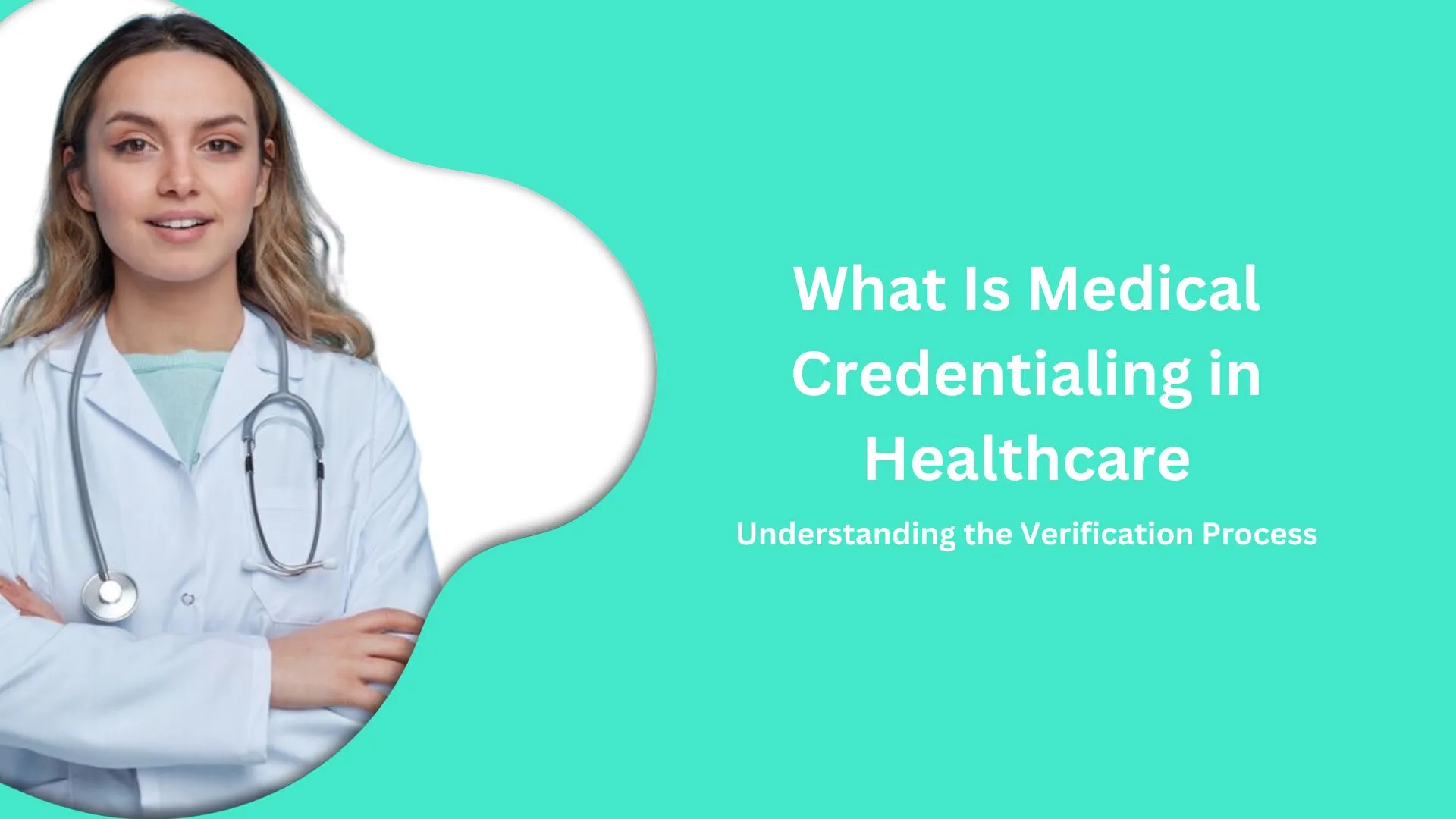Credentialing in healthcare is a critical process that directly impacts the quality of care you receive. It’s a thorough vetting procedure that healthcare facilities and insurance networks use to ensure that healthcare professionals are properly qualified to provide medical services. This system is designed to protect you by confirming the education, training, and proven skills of the healthcare providers that you entrust with your well-being.
In this system, a variety of documents, such as diplomas, residency completion certificates, state licenses, and board certifications, are collected and reviewed. This collection and verification process helps healthcare organizations maintain high standards and is required before practitioners can start caring for patients. Credentialing often runs in tandem with the process of privileging, which determines the specific procedures and services a practitioner is authorized to perform within a healthcare facility based on their credentials.
For you, as a patient or consumer, understanding credentialing in healthcare assures you that the professionals treating you have met stringent standards for education and competency. It’s a fundamental component in the framework of medical safety and quality assurance, contributing to a trustworthy healthcare system where your needs are met by qualified individuals.
Understanding Credentialing in Healthcare
Credentialing in healthcare is the process by which medical providers are evaluated and verified to ensure they have the required qualifications to offer healthcare services. This multi-step protocol is crucial for maintaining standards within healthcare facilities and protecting patient safety.
The Credentialing Process
You will find that this often involves the thorough review of a provider’s completed education, training, residency, and licenses. Additionally, references, work history, and any certifications or malpractice history are examined.
- Primary Source Verification: This refers to the act of verifying a provider's credentials directly from the original source.
- Ongoing Monitoring: Credentialing is not a one-time event. Continuous monitoring of a provider's qualifications and performance is necessary.
With advances in technology, credentialing software has become an important tool, streamlining the verification process and ensuring accuracy.
Provider Credentialing
Provider credentialing is a subset within the healthcare credentialing system focused on individual medical professionals.
- Submission: Providers submit personal information, credentials, and evidence of their professional history.
- Verification: The credentialing entity then verifies the information against various databases and sources.
- Approval: After stringent verification, the provider is either approved or denied privileges to offer healthcare services.
Healthcare Credentialing
This term generally encompasses the entire scope of ensuring all service providers within a healthcare entity meet necessary requirements. Healthcare credentialing fosters a trustworthy, competent healthcare environment.
Remember, staying compliant with credentialing standards is vital for both lauding high-quality care and mitigating any legal risks associated with employing under-qualified staff.
Fundamentals of the Credentialing Process

The credentialing process in healthcare is a systematic approach to verifying the qualifications and legal compliance of healthcare professionals. This process ensures that you receive care from individuals who have met all required standards of practice and regulatory requirements.
Credentialing Standards and Regulations
In the healthcare sector, credentialing standards and regulations are designed to protect patient safety and maintain high-quality care. Regulatory bodies such as the Joint Commission and the National Committee for Quality Assurance (NCQA) set forth the guidelines that healthcare organizations must follow during the credentialing process. Compliance with these standards involves:
- Verification of credentials: Ensuring that all provided documentation of a healthcare provider's education, training, and experience is authentic.
- Adherence to regulatory requirements: Healthcare providers need to meet state and federal laws, which include possessing valid licenses and certifications as well as clearance from sanctions or disciplinary actions.
Stages of the Credentialing Process
The credentialing process proceeds through several defined stages, each crucial for the thorough vetting of healthcare professionals:
- Application: Healthcare providers submit a detailed application, listing their qualifications, work history, and references.
- Primary Source Verification: Primary sources, such as universities and licensing boards, confirm the authenticity of the information provided in the application.
- Review and Approvals: A credentialing committee carefully reviews all verified information to make a decision about credentialing approval.
- Ongoing Compliance Monitoring: Continuous monitoring ensures that approved providers maintain compliance with all credentialing standards and regulations throughout their tenure.
Each of these stages is critical to ensure that you are treated by competent and compliant healthcare professionals, minimizing risks and enhancing the overall quality of care.
Roles and Responsibilities in Credentialing
In the complex landscape of healthcare, credentialing ensures that the healthcare professionals who provide care in facilities have the necessary qualifications, expertise, and skill. Your understanding of the roles and responsibilities within this process is crucial to maintaining high standards of patient care and trust in healthcare services.
Credentialing Committee
The Credentialing Committee bears a fundamental role in the oversight and decision-making of the credentialing process. This entity, typically composed of seasoned healthcare providers and administrative personnel, is responsible for:
- Evaluating credentials: Assessment of professional qualifications, such as education, training, and work history, of healthcare professionals.
- Making judgments: The committee uses its collective expertise to make informed decisions on whether to grant, deny, or restrict clinical privileges.
| Credentialing Committee Role | Description |
|---|---|
| Evaluation | Reviewing documentation pertaining to a professional’s qualifications. |
| Decision-making | Granting privileges based on judgment and set criteria. |
Credentialing Specialist
Your Credentialing Specialist, often an HR professional with specialized knowledge, plays a pivotal role in managing the credentialing process within a healthcare facility. Responsibilities include:
- Document management: Organizes and verifies all relevant documents of providers to ensure they meet the necessary standards.
- Process facilitator: Acts as a liaison between healthcare providers and the credentialing committee, ensuring the process moves smoothly.
| Credentialing Specialist Task | Function |
|---|---|
| Verification | In-depth checks of all credentials. |
| Coordination | Serving as the point of contact for providers and committee. |
In your interpretation of these roles, remember that both the Credentialing Committee and the Credentialing Specialist provide crucial checks and balances to maintain the high trust patients place in healthcare facilities and the professionals serving them. Their expertise and thoroughness are foundational to a trustworthy healthcare system.
Criteria for Healthcare Provider Credentialing

Credentialing in healthcare is an essential process that ensures providers meet the necessary standards to deliver safe and effective care. During this process, your qualifications, training, and experience are scrutinized to maintain high-quality healthcare delivery.
Education and Training Evaluation
In evaluating your education and training, the credentialing entity will review your educational background, which includes confirming your graduation from an accredited medical school. They will also verify your completion of any residency programs and specialization training. Provider credentialing typically requires the following:
- Education: Validation of medical degree (MD, DO, etc.)
- Residency: Confirmation of completed residency program
- Specialties: Verification of any specialty training if applicable
- Board Certification: Proof of board certification in your chosen specialty or specialties, if acquired
License and Certification Verification
Your licensure is a critical component of the credentialing process. It confirms legal authorization to practice medicine in your state. Certification verification goes hand-in-hand with licensure to authenticate your competency in a medical specialty. Credentials personnel will check:
- Education: Validation of medical degree (MD, DO, etc.)
- Residency: Confirmation of completed residency program
- Specialties: Verification of any specialty training if applicable
- Board Certification: Proof of board certification in your chosen specialty or specialties, if acquired
Background and Experience Checks
A thorough background check will be conducted to ensure your credibility and history reflect a commitment to professional integrity. This includes examination of your work history and any malpractice claims. These checks are carried out through various avenues:
- National Practitioner Data Bank (NPDB): Inquiry into the NPDB for malpractice settlements, disciplinary actions, and other relevant reports
- Employment History: Review of career timeline and positions held, ensuring consistent and quality practice
- References: Assessment of peer references to gauge professional standing and performance
- Malpractice History: Search for records of past malpractice claims and their outcomes
Provider Qualifications and Documentation
When you are evaluating the credentials of healthcare providers, it is crucial to assess their qualifications and accompanying documentation. Qualifications refer to the education, training, and experience that providers have acquired.
Documentation required for verifying qualifications typically includes:
- Curriculum Vitae (CV): A comprehensive CV details education, training, experience, and publications.
- Certificates: This includes medical school diplomas, residency completion certificates, and any other relevant certifications.
- Specialty Certificates: Evidence of specialty training or board certification in specific areas of medicine.
- Professional Liability Insurance: Documentation showing the provider is insured against potential liability claims.
In the credentialing process, you’ll encounter the following essential documents:
| Document Type | Purpose |
|---|---|
| Medical School Diploma | Verifies educational background |
| Residency Certificates | Confirms completion of training |
| Board Certifications | Affirms specialty expertise |
| State Medical Licenses | Legal permission to practice |
| Continuing Medical Education | Ongoing professional development |
| Professional Liability Insurance | Proof of financial responsibility |
Providers usually submit these documents to healthcare organizations or credentialing bodies. It’s your responsibility to ensure that all credentials are current, valid, and obtained from recognized institutions. Regular updates and checks are necessary, as qualifications and insurance can change over time.
Remember, thorough credentialing protects patients and institutions by confirming that healthcare providers are adequately trained and legally authorized to practice.
Importance of Credentialing for Patient Safety

Credentialing in healthcare is a systemic approach to enhancing patient safety. By thoroughly vetting the qualifications and track record of healthcare providers, credentialing ensures that you receive care from individuals who meet rigorous professional standards.
- Ensures Competence: Credentialing verifies the education, training, and skills of healthcare professionals. This process certifies that your healthcare providers are proficient in their specialties, which is critical for delivering safe and effective care.
- Builds Trust: When a healthcare provider is credentialed, you can be confident in their abilities. This trust is fundamental to the patient-provider relationship and contributes to more positive health outcomes.
- Minimizes Liability: Proper credentialing helps healthcare facilities reduce legal risks. By ensuring staff are qualified, these institutions protect themselves, and thereby you, from the consequences of inadequate care.
The credentialing process involves primary source verification of credentials, ongoing monitoring of provider performance, and regular reevaluation to maintain high standards. It’s a comprehensive approach that underscores the importance of continuous improvement in healthcare delivery for your safety and wellbeing.
Credentialing and Healthcare Facilities
Credentialing is a critical process in healthcare facilities, ensuring that healthcare providers meet stringent standards. This includes verifying qualifications, experience, and competence. It’s essential for maintaining high-quality care and meeting legal and insurance requirements.
Hospital Credentialing
At the heart of hospital operations, credentialing allows you to verify the qualifications of your healthcare providers. Hospitals conduct thorough background checks, including education, training, and board certifications, to grant hospital privileges. This process assures patients and the healthcare organization that providers are competent and capable of delivering care. Credentialing also plays a crucial role in managing healthcare provider credentialing records to comply with state and federal regulations.
Key Functions:
- Verification of qualifications and certifications
- Ensuring adherence to healthcare standards
- Granting hospital privileges to qualified providers
Interactions with Insurance and Payers
Credentialing affects your interactions with insurance companies and payers. As a healthcare facility, successful credentialing is necessary for reimbursement by insurance for services provided. It’s a foundational step that enables providers to participate in health plans and networks. Insurers require a strict credentialing process to protect their members and ensure that only eligible providers receive payment.
Insurance Requirements:
- Validation of provider credentials before inclusion in network
- Reevaluation and renewals of provider status for ongoing compliance
- Direct impact on reimbursement rate and in-network status
By understanding credentialing processes, you ensure the credibility of your healthcare facility and secure your financial interests with payers.
Credentialing for Specialized Healthcare Roles

Credentialing is a rigorous process essential for maintaining quality care and patient safety by ensuring that healthcare professionals have the required qualifications and licenses to perform specific clinical privileges.
Physician Credentialing
When you’re navigating the healthcare system, you’ll encounter physicians who have undergone meticulous credentialing processes. This involves verification of their medical education, residency training, board certification, state licenses, and work history. Provider credentialing also evaluates malpractice claims and disciplinary actions to ascertain a physician’s eligibility for granting privileges at a healthcare facility. The process typically includes:
- Primary Source Verification: Ensuring the authenticity of credentials directly from the issuing source.
- Board Certification Check: Verifying if a physician has the necessary board certifications for their specialty.
- Ongoing Monitoring: Keeping track of license expirations and any changes in a physician’s standing.
Credentialing for physicians is not a one-time event; it requires periodic re-credentialing to maintain clinical privileges and adhere to healthcare standards.
Nursing and Allied Health Professionals
Next to physicians, nursing and allied health professionals such as nurse practitioners also require detailed credentialing. For these healthcare providers, the process is designed to match their qualifications and skills with the clinical duties they will perform. Credentialing involves:
- Education and License Verification: Ensuring degrees, certifications, and licenses are current and valid.
- Clinical Experience Review: Assessing the adequacy and relevance of clinical experience for the intended role.
- Privileging Criteria: Specific competencies and skills are cross-checked to align with job requirements.
Credentialing for nurses and other allied health professionals is a critical component that supports their participation in direct patient care and influences the scope of practice within the healthcare setting.
Advancements in Credentialing Technology
The landscape of credentialing in healthcare is undergoing a transformation, largely due to advancements in technology. These technological innovations aim to streamline the process, enhance accuracy, and maintain compliance with evolving standards.
Digital and Paperless Credentialing
The shift towards digital and paperless credentialing systems simplifies the task of managing healthcare providers’ credentials. Software solutions, like those offered by CAQH, facilitate the credentialing process by eliminating the need for physical documents. Your information is securely stored in the cloud, making it easily accessible to authorized Credentials Verification Organizations (CVOs) and other necessary parties.
Benefits of Paperless Credentialing:
- Security: Enhanced encryption and secure storage.
- Efficiency: Quicker retrieval and submission of documents.
- Environment: Reduced paper waste, contributing to sustainability.
Ongoing Monitoring and Recredentialing
With the implementation of credentialing software, you experience real-time, ongoing monitoring of licensure statuses and other critical credentials. This proactive approach ensures that any changes are promptly identified and addresses the need for recredentialing in a timely manner.
Ongoing Monitoring Features:
- Alerts: Immediate notifications for expiring credentials.
- Updates: Automatic updates when new data is available.
- Compliance Tracking: Regular checks to maintain compliance with regulations.
By integrating CAQH solutions and other digital technologies, the credentialing process has become more consistent and less susceptible to human error, underscoring the importance of advancements in credentialing technology.
Consequences of Inadequate Credentialing

Inadequate credentialing in healthcare can result in serious repercussions that affect patients, healthcare providers, and medical institutions. Credentialing is the process of verifying the qualifications and professional background of healthcare practitioners before they are allowed to practice. Here are the potential consequences when this process is not thoroughly conducted:
- Patient Safety Risks: When hospitals fail to verify the credentials and malpractice history of their staff, patients are exposed to care by potentially unqualified practitioners. This could lead to substandard treatment and increased malpractice claims.
- Institutional Sanctions: Healthcare facilities risk sanctions if they employ improperly credentialed staff. Sanctions can range from fines to loss of accreditation.
- Reputational Damage: The reputation of a healthcare institution can suffer immensely, potentially resulting in a loss of trust from the community it serves.
- Disciplinary Actions: Practitioners without proper credentialing may face disciplinary actions, including suspensions or license revocations, jeopardizing their careers.
- Legal and Financial Consequences: Inadequate credentialing can lead to malpractice lawsuits and significant financial penalties, not only affecting practitioners personally but also the financial stability of the institutions they represent.
Your due diligence in assuring that credentialing is appropriately managed is essential to safeguarding everyone involved, from the patient to the provider, and maintaining the integrity of the healthcare system.
Emerging Trends in Healthcare Credentialing
In the landscape of healthcare credentialing, two significant trends stand out for their transformative potential. These trends encompass changes in how providers are verified and the shifting intricacies of insurance credentialing.
Telemedicine and Remote Provider Verification
With the rise of telemedicine, the need for remote verification of healthcare providers has become paramount. You will find that technological advancements are enabling more efficient processes—lessening the time it takes for providers to be verified and credentialed remotely. Stakeholders are increasingly adopting automated systems and digital credentialing, which allow the verification process to be conducted online, ensuring that providers can start delivering care to patients in a timely manner.
- Key Actors: Credentialing bodies, regulatory agencies, healthcare providers
- Impact: Streamlined verification, reduced administrative burden
Insurance Credentialing Dynamics
Insurance credentialing, or payor enrollment, is shifting due to regulatory changes and market demands. As a provider, your engagement with insurance networks now includes digital tools that facilitate the submission and tracking of credentialing applications. In response to these changes, payors are restructuring their enrollment processes for better efficiency.
- Highlighted Changes: Digital application portals, real-time status updates
- Stakeholders Influenced: Insurance providers, healthcare practitioners, administrative staff
Adapter regulations and evolving technologies continue to shape insurance credentialing dynamics, ensuring that your ability to collaborate with insurance networks remains a central focus of this evolution.
Frequently Asked Questions
The credentialing process involves verifying the qualifications, experience, and professional standing of healthcare providers. You submit your education, training, and work history to a medical board or a credentialing body, which then reviews these documents to ascertain your competence to provide healthcare services.
In healthcare, there are primarily two types of credentialing: organizational and provider. Organizational credentialing assesses the standards of healthcare facilities, while provider credentialing focuses on individual professionals to ensure they are qualified to offer healthcare services.
Credentialing is vital for medical billing and insurance as it is the process that allows you to be recognized by insurance networks. It provides insurers with the assurance that you are qualified to deliver care, enabling you to receive reimbursement for services provided to patients.
Credentialing is a critical process that confirms your legitimacy and ability to provide quality healthcare. It also ensures your eligibility to be part of professional networks and to participate in insurance plans, which is often essential for your practice’s financial viability.
Credentialing contributes to high standards in patient care by ensuring that only suitably trained and qualified healthcare providers practice. It gives your patients confidence in your abilities and maintains the quality of the healthcare workforce.
To become credentialed, you typically need to provide proof of your medical degree, residency, licenses, and any specialty board certifications. Other requirements might include evidence of work history, privileges in other institutions, and a record of malpractice insurance and any liability claims.


One thought on “What Is Medical Credentialing in Healthcare? 2025 Guide”